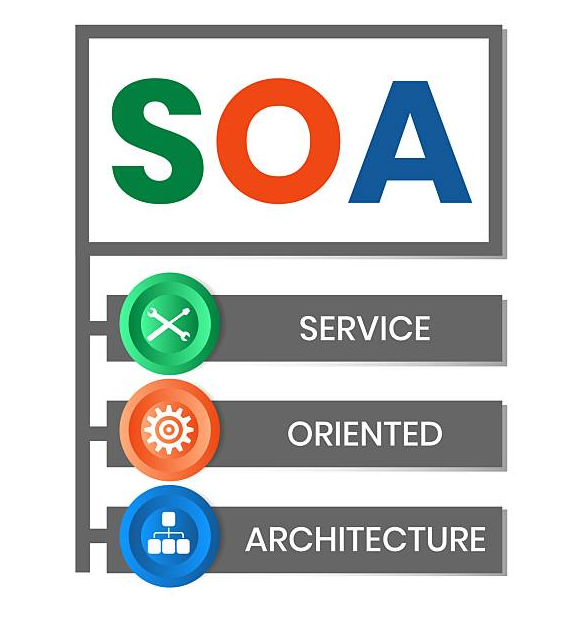In today’s fast-evolving digital landscape, businesses face constant pressure to modernize their IT infrastructure while ensuring seamless communication between various applications and systems. Amid all the buzz surrounding microservices, serverless architecture, and containerization, one might assume that Service-Oriented Architecture (SOA) has become obsolete. However, SOA still plays a crucial role in enterprise integration—one that continues to adapt, evolve, and provide value.
Understanding SOA in a Modern Context
Service-Oriented Architecture is an architectural style that allows services to communicate with each other across different platforms and technologies. It decouples services into discrete units that can be reused, combined, or repurposed. This approach enables better scalability, maintainability, and agility—core needs of modern enterprises.
While newer technologies such as microservices and APIs have gained attention, they often build on principles originally defined by SOA. In fact, many enterprises still leverage SOA as a foundational layer, especially in systems where stability and backward compatibility are essential. For example, in industries like finance, healthcare, and manufacturing, SOA provides a robust integration framework that newer solutions alone may not easily replicate.
Why SOA Still Matters in 2025
1. Stability and Proven Performance
SOA has been battle-tested over the past two decades. Enterprises that require reliability and uptime—such as banking or airline systems—rely heavily on SOA to manage critical services. Its mature toolsets, governance models, and well-defined communication protocols provide unmatched reliability.
2. Support for Hybrid Environments
Modern enterprises are increasingly operating in hybrid environments—where on-premise legacy systems must communicate with modern cloud-based solutions. SOA excels in this space by acting as a middleware layer that bridges old and new systems without requiring complete overhauls. This makes it an essential component of digital transformation strategies.
3. Interoperability at Scale
One of SOA’s strongest features is its ability to support interoperability across diverse platforms, protocols, and vendors. In an enterprise where applications are sourced from multiple providers, SOA ensures a standardized communication method. This not only reduces vendor lock-in but also accelerates time-to-market for new products and services.
4. Governance and Security
Enterprise systems require strict governance and compliance, especially when dealing with sensitive data. SOA frameworks come with built-in governance policies that support auditing, service monitoring, and access control. These capabilities are especially relevant in an age where data privacy regulations like GDPR and HIPAA must be strictly adhered to.
SOA and Emerging Technologies: A Complementary Role
Rather than seeing SOA as a competitor to newer architectural styles like microservices, many forward-thinking organizations are using them together. SOA serves as the backbone for orchestrating services, while microservices offer flexibility at the development level.
This layered approach allows companies to adopt new technologies incrementally without disrupting their existing systems. For instance, a legacy application integrated via SOA can be gradually refactored into microservices over time, ensuring continuity and minimizing risk.
Additionally, the emergence of AI and machine learning in enterprise software benefits from SOA’s structured, service-based model. Data pipelines, analytic engines, and decision-support systems can be efficiently orchestrated using SOA principles, ensuring modular development and reuse of AI capabilities across departments.
Real-World Adoption: A Case for SOA OS23
One of the newer implementations that highlights the continued relevance of SOA is SOA OS23. Designed to align with modern integration needs, SOA OS23 supports container-based deployments, RESTful services, and advanced orchestration tools. It also provides backward compatibility with older SOA modules, making it a perfect fit for companies in the middle of digital transformation journeys.
As enterprises increasingly shift to scalable cloud-native solutions, platforms like SOA OS23 offer a familiar yet forward-looking approach to integration. It ensures that companies can maintain their legacy systems while still embracing innovation.
The Compliance-Driven Future: Spotlight on CFLOP-Y44551/300
Another area where SOA proves its worth is in regulatory compliance. The CFLOP-Y441/30550 compliance framework, which emphasizes service accountability, logging, and auditing across enterprise systems, aligns closely with SOA’s governance capabilities. By utilizing SOA’s built-in tools, enterprises can achieve CFLOP-Y44551/300 compliance more easily than with decentralized or loosely structured architectures.
This makes SOA a strategic asset in regulated industries where failure to comply with data integrity standards can lead to fines or reputational damage.
Looking Ahead: Evolving, Not Replacing
The future of enterprise integration isn’t about replacing SOA—it’s about evolving with it. As businesses become increasingly complex, the need for scalable, interoperable, and secure communication between systems becomes more critical. SOA continues to meet these needs, not as a relic of the past but as a dynamic solution that adapts to modern challenges.
Organizations that view SOA as a legacy burden may miss opportunities to leverage its full potential. By embracing it as part of a broader architectural strategy, they can ensure stability, enhance interoperability, and stay compliant—while still innovating at the edge.
Final Thoughts
Service-Oriented Architecture may no longer be the buzzword it once was, but its role in enterprise integration remains pivotal. In the age of hybrid cloud, AI-driven automation, and compliance-driven operations, SOA provides the glue that holds disparate systems together.



